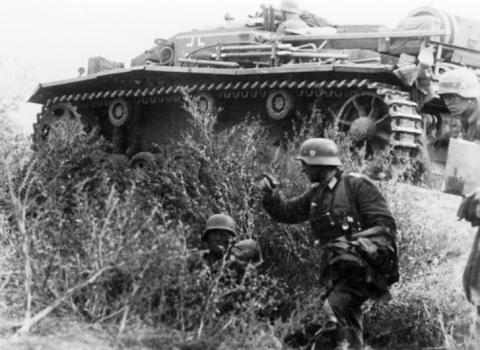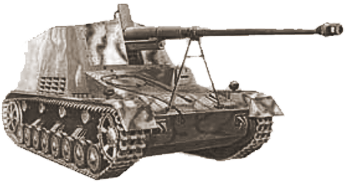The German Sixth Army on Stalingrad's Approaches

By August of 1942 reinforcements sent to assist Army Group B's drive on Stalingrad had transformed the German Sixth Army from a potent assembly of men and machines to the most powerful army in the world, with 22 divisions and supporting units under the command of General Friedrich Paulus. Facing the Sixth Army, and Fourth Panzer Army's seven German and four Romanian divisions, was a Soviet Stalingrad Front that had been decimated in July. For instance, in spite of receiving a healthy dose of the Soviet Union's prodigious factory output in tanks, output that had allowed the Stalingrad Front's armored forces to reform time and again following tactical defeats at German hands; the Stalingrad Front had dropped from 1,239 tanks on July 22nd to 250 tanks by the middle of August. In addition, the Soviet Southern Front was down to 200 tanks. Thus both Soviet Fronts fielded only about 450 tanks combined against a similar number of German tanks. In addition, the Stalingrad Front had steadily weakened, not just in tanks, but in terms of ammunition reserves, heavy weapons, and mobility - with a paucity of trucks exacerbating the fact the Germans were cutting or interdicting most major rail lines into the region.
Paulus would use the rough balance in armored forces and his advantages in command and control as well as veteran leadership to decimate the 1st and 4th Tank Armies and 62nd Army in the first half of August and then destroy the 4th Tank Army yet again on August 15th while defeating a significant Soviet counterattack on August 17th that included ten Rifle Divisions, two Tank Brigades and a Mortar Regiment. Nevertheless, the Sixth Army's rate of advance during the first three weeks of August dropped to a meager 1-2 miles per day as a result of incessant Soviet counterattacks. The slow rate of advance meant that even though the Stalingrad Front's armies were repeatedly destroyed, they were not eliminated, as had happened to the Soviet armies during Barbarossa. Consequently, significant numbers of Russian soldiers were able to escape German capture and create the nucleus to reform entire armies within just days and weeks. Thus, although Army Group B drove before it the 62nd and 64th Armies and 1st and 4th Tank Armies, their defensive efforts granted Stavka with the time to rush reserves to the region; subsequently resulting in the formation of fresh defensive fronts wearing down the otherwise seemingly unstoppable German Sixth and Fourth Panzer Army's.
by Steven Douglas Mercatante



Post new comment